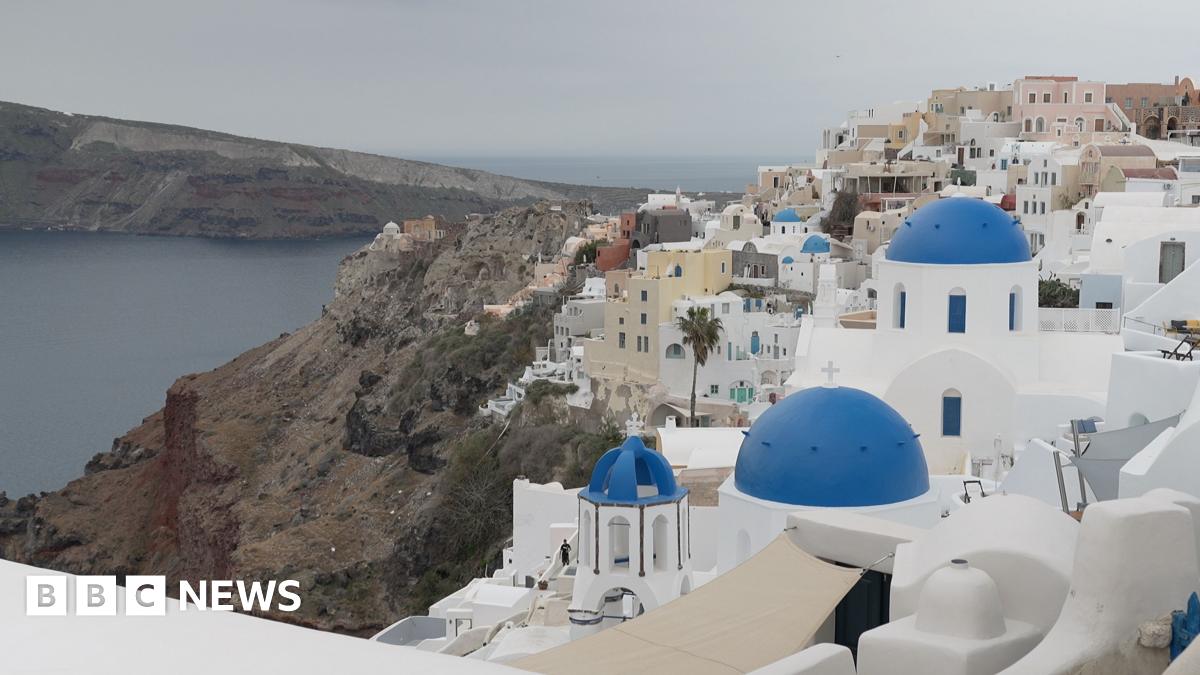Santorini's Volcano: Clues To Its Next Major Eruption

Welcome to your ultimate source for breaking news, trending updates, and in-depth stories from around the world. Whether it's politics, technology, entertainment, sports, or lifestyle, we bring you real-time updates that keep you informed and ahead of the curve.
Our team works tirelessly to ensure you never miss a moment. From the latest developments in global events to the most talked-about topics on social media, our news platform is designed to deliver accurate and timely information, all in one place.
Stay in the know and join thousands of readers who trust us for reliable, up-to-date content. Explore our expertly curated articles and dive deeper into the stories that matter to you. Visit Best Website now and be part of the conversation. Don't miss out on the headlines that shape our world!
Table of Contents
Santorini's Volcano: Clues to its Next Major Eruption
Santorini, the iconic Greek island famed for its breathtaking sunsets and white-washed villages, sits atop a restless giant: a caldera volcano with a history of cataclysmic eruptions. While the island currently enjoys a period of relative calm, scientists are diligently studying the volcano's behavior, searching for clues that could predict its next major eruption. Understanding this potential threat is crucial not only for the island's residents but also for the global scientific community.
A History of Explosive Power:
Santorini's volcanic history is punctuated by massive eruptions, most notably the Minoan eruption around 1600 BC. This devastating event, one of the largest in recorded history, dramatically reshaped the island's landscape and is believed to have significantly impacted the Minoan civilization on Crete. The eruption created the caldera we see today, a vast, partially submerged crater that forms the island's unique crescent shape. This powerful past serves as a stark reminder of the volcano's potential for future explosive activity.
Recent Activity and Monitoring Efforts:
While no imminent eruption is predicted, Santorini's volcano remains active. Scientists from the National Observatory of Athens, along with international collaborators, continuously monitor seismic activity, gas emissions, and ground deformation using a sophisticated network of sensors. These efforts provide invaluable data, helping researchers to understand the volcano's internal processes and identify any precursory signs of an impending eruption. Small earthquakes and subtle changes in ground elevation are closely tracked, representing key indicators of magma movement beneath the surface. Analysis of gas emissions, particularly the ratios of different gases, can offer insights into the pressure build-up within the volcanic system.
Understanding the Magma System:
One key area of research focuses on understanding the nature and dynamics of the magma reservoir beneath Santorini. Scientists employ various geophysical techniques, such as seismic tomography and magnetotellurics, to create detailed 3D models of the subsurface structure. This allows them to map the location, size, and properties of the magma chambers, providing crucial information about the potential volume of magma available for future eruptions. Furthermore, geochemical analyses of volcanic rocks provide insights into the magma's composition and its evolution over time.
Predicting the Unpredictable:
Predicting volcanic eruptions with absolute certainty remains a significant challenge. While scientists can identify potential precursors, translating these observations into accurate eruption forecasts is complex. The precise timing, magnitude, and style of a future Santorini eruption are still uncertain. However, advancements in monitoring technology and improved understanding of volcanic processes are gradually enhancing the accuracy of eruption forecasts. This increased understanding allows for better risk assessment and improved preparedness measures.
Preparing for the Future:
The potential for a future major eruption necessitates robust preparedness strategies. This includes developing effective evacuation plans, establishing early warning systems, and educating the local population about volcanic hazards. International collaboration plays a vital role in sharing knowledge and resources, ensuring the best possible response to a potential volcanic crisis. The ongoing research and monitoring efforts at Santorini are not just about predicting the next eruption, but about safeguarding the lives and livelihoods of those who call this beautiful, yet potentially dangerous, island home.
Keywords: Santorini volcano, Santorini eruption, Greek volcano, volcanic eruption, caldera, Minoan eruption, volcanic monitoring, magma, seismic activity, gas emissions, volcanic risk, disaster preparedness, National Observatory of Athens.

Thank you for visiting our website, your trusted source for the latest updates and in-depth coverage on Santorini's Volcano: Clues To Its Next Major Eruption. We're committed to keeping you informed with timely and accurate information to meet your curiosity and needs.
If you have any questions, suggestions, or feedback, we'd love to hear from you. Your insights are valuable to us and help us improve to serve you better. Feel free to reach out through our contact page.
Don't forget to bookmark our website and check back regularly for the latest headlines and trending topics. See you next time, and thank you for being part of our growing community!
Featured Posts
-
 5 Proven Strategies For First Time Homebuyers To Secure A Mortgage
Apr 22, 2025
5 Proven Strategies For First Time Homebuyers To Secure A Mortgage
Apr 22, 2025 -
 The Evolution Of Country Analyzing The Impact Of Three Chords And The Truth
Apr 22, 2025
The Evolution Of Country Analyzing The Impact Of Three Chords And The Truth
Apr 22, 2025 -
 Algorithm Error Or Systemic Failure The Case Of Linas Preventable Murder
Apr 22, 2025
Algorithm Error Or Systemic Failure The Case Of Linas Preventable Murder
Apr 22, 2025 -
 Increased Safety Measures Prison Officers Seek Authorization For Stun Guns
Apr 22, 2025
Increased Safety Measures Prison Officers Seek Authorization For Stun Guns
Apr 22, 2025 -
 Prime Ministers Silence On Court Ruling And Spying Claims Under Fire
Apr 22, 2025
Prime Ministers Silence On Court Ruling And Spying Claims Under Fire
Apr 22, 2025
